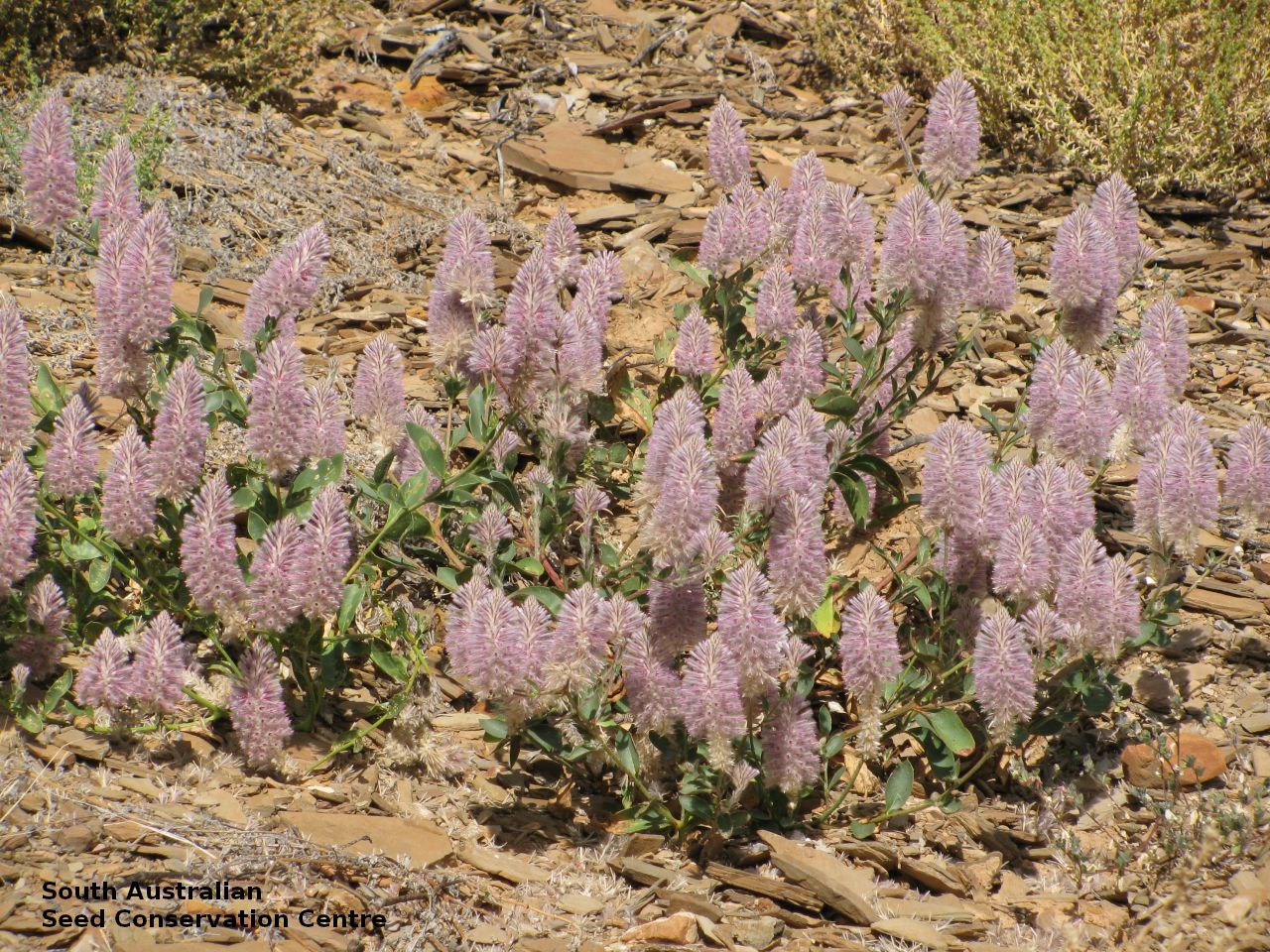
















Botanical art
Prior names
Ptilotus nobilis ssp. nobilis, partly
Ptilotus exaltatus var. pallidus
Ptilotus exaltatus var. exaltatus
Trichinium exaltatum
Common names
Tall Mulla Mulla
Pink Mulla Mulla
Etymology
Ptilotus from the Greek 'ptilotos' meaning feathered or winged; referring to the hairy flowers. Exaltatus from Latin meaning raised up, tall; referring to the flower spikes (formally nobilis meaning notable or showy; alluding to the species large and showy flower-spike).
Distribution and status
Found across much of South Australia except for the wetter parts, growing in a variety of habitats, including Acacia woodland, mallee-eucalypt woodland, shrubland or grassland, on red sands, sandy loams or clays, occasionally on stony sites. Also found in all mainland states. Native. Common in South Australia. Common in the other states.
Herbarium regions: North Western, Lake Eyre, Nullarbor, Gairdner-Torrens, Flinders Ranges, Eastern, Eyre Peninsula, Northern Lofty, Murray
AVH map: SA distribution map (external link)
Plant description
Spreading to erect herb to 1 m high or more with branching stems on larger specimens. Leaves obovate to broadly spathulate, those at base to 15 cm long and 7 cm wide, subfleshy, glabrous except on youngest growth, margins often undulate. Flower-spike ovoid at first, to 5 cm wide, elongating with age, to 15 cm long with yellowish or pinkish when young, intensely fragrant when fresh. Flowering between August and November. This subspecies is distinguished from the other subspecies by the inflorescences being 5-20 cm long (2-5 cm long in subsp. semilanatus), with the apex conical ( truncate or obtuse in subsp. semilanatus), the tepals 17-24 mm long (14-17 mm long in subsp. semilanatus), and the linear or narrowly-spathulate leaves 10-40 mm wide, with straight margins (2-10) mm wide, margins undulate in subsp. semilanatus). Fruits are cylindrical head containing numerous long papery and hairy fruits, each containing one seed Seeds are shiny dark red to black, reinform to 2.5 mm long and 1.5 mm wide. Seed embryo type is peripheral.
Seed collection and propagation
Be very careful when collecting this species as the fruits contain fine hairs that may cause an allergic reaction for some people. Collect the fruit heads when dried to a pale straw colour. Each fruit should come off the head easily when fingers are rubbed up the stem. Collect more fruits than required as not all fruits will have a viable seed. Be very careful when cleaning this species as the fruits contain fine hairs that may cause an allergic reaction for some people. To clean, rub the fruit heads gently to dislodge the seed at the base of each fruit. Use a sieve to separate the unwanted material. Store the seeds with a desiccant such as dried silica beads or dry rice, in an air tight container in a cool and dry place. Seed viability is usually high but seed availability tend to be low. Seeds are non-dormant, viable seed should germinate readily.
| Location | No. of seeds (weight grams) | Number of plants | Date collected | Collection number Collection location | Date stored | % Viability | Storage temperature |
|---|---|---|---|---|---|---|---|
| BGA | 950 (1.39 g) | 40 | 4-Dec-2003 | PJA56 North Western | 23-Mar-2006 | 55% | -18°C |
Number of plants: This is the number of plants from which the seeds were collected.
Collection location: The Herbarium of South Australia's region name.
% Viability: Percentage of filled healthy seeds determined by a cut test or x-ray.